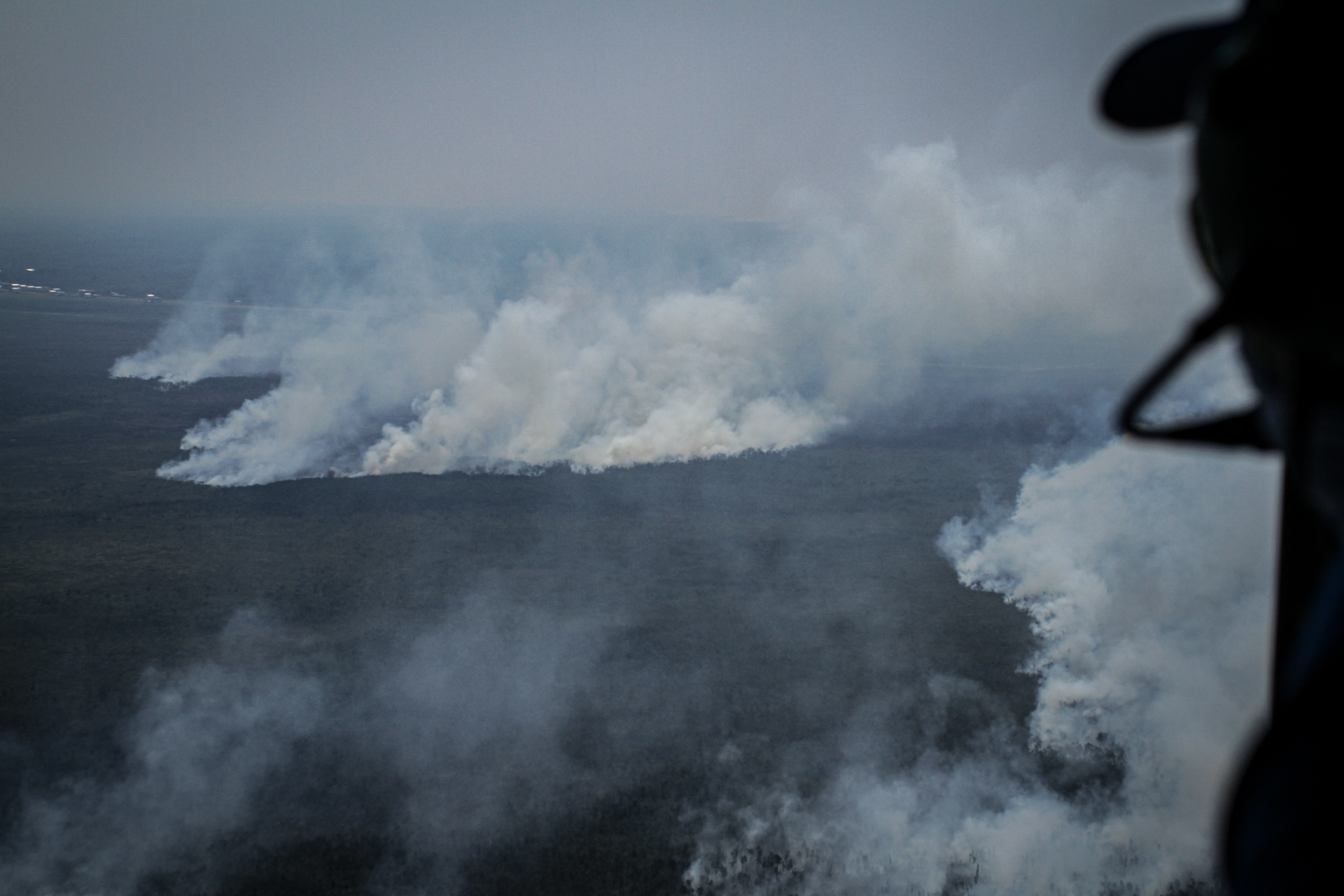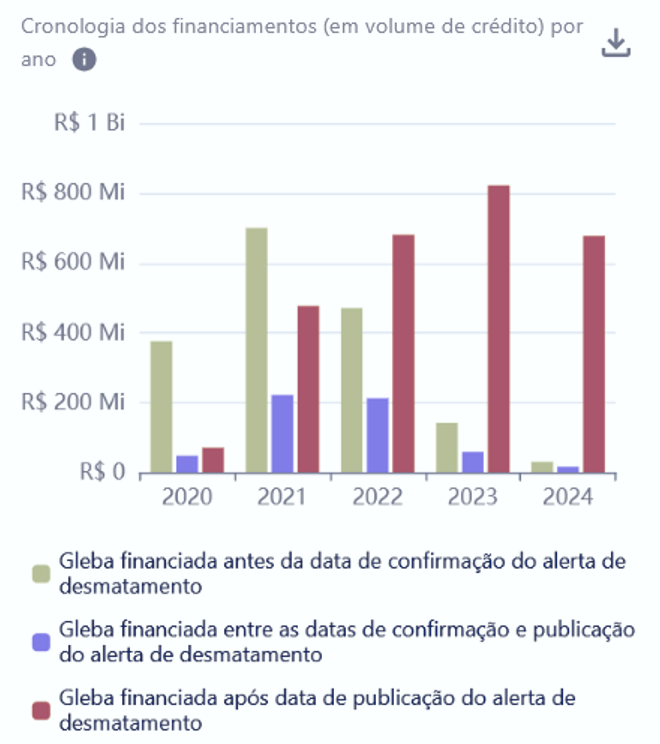News
Which Banks Are Financing Deforestation in Brazil?

Last year, MapBiomas, published a new platform, called Mapbiomas Crédito Rural. It crosses deforestation data with information about the rural credit received for a specific farm. The dataset is not comprehensive, as not all rural credit transactions have geospatial data. Nevertheless, the platform starts to paint a picture about the links between rural credit and deforestation on the financed areas. The map has filters that allow to search per bank, as well as searches for areas financed before, during or after deforestation alerts were published.
An analysis of the past 5 years (July 2020 – June 2025) for the Brazilian Amazon, shows that banks financed 1.65 million hectares with deforestation, with a total of BRL 4.4 billion (USD 81 million). Just two banks are responsible for the vast majority of this finance: Banco da Amazônia and Banco do Brasil:
Banco da Amazônia is the bank that has provided most credit to areas linked to deforestation. During the studied period, it provided R$2.24 billion (≈460.4 million USD) in credit to over 464,500 hectares of land with links to deforestation.
Banco do Brasil is the bank that financed the largest area linked to deforestation: 946,365 hectares, at the amount of R$1.49 billion (≈308.7 million USD), much of it related to cattle. Its exposure spans every phase of deforestation: before, during, and after forest loss.
On the third place, both in value and in area, is Banco do Nordeste do Brasil, which financed 41,697 hectares tied to deforestation and disbursed R$175 million (≈32.5 million USD).
On the positive side, the data shows a downward trend in credit volume for areas where deforestation alerts occurred after the credit was provided. However, there is a worrying trend in the increase of credit volume to areas where the deforestation alert occurred before credit was provided. Recent deforestation is something that should be flagged in a bank’s due diligence process. And while the occurrence of a deforestation alert does not mean the deforestation was illegal, the chances are high that it was. A recent study by ICV indicated that between 2023-2024, 91% of the deforestation in the Amazon was illegal. An initial analysis of the data therefore indicates that financial institutions, in particular Banco do Brasil and Banco da Amazonia, need to strengthen their due diligence processes and include a proper review of deforestation alerts on their clients’ farms.
